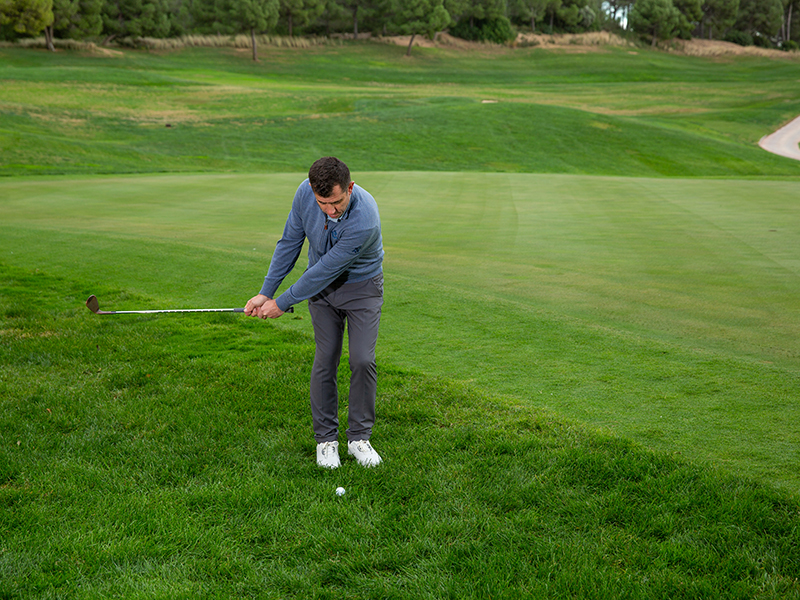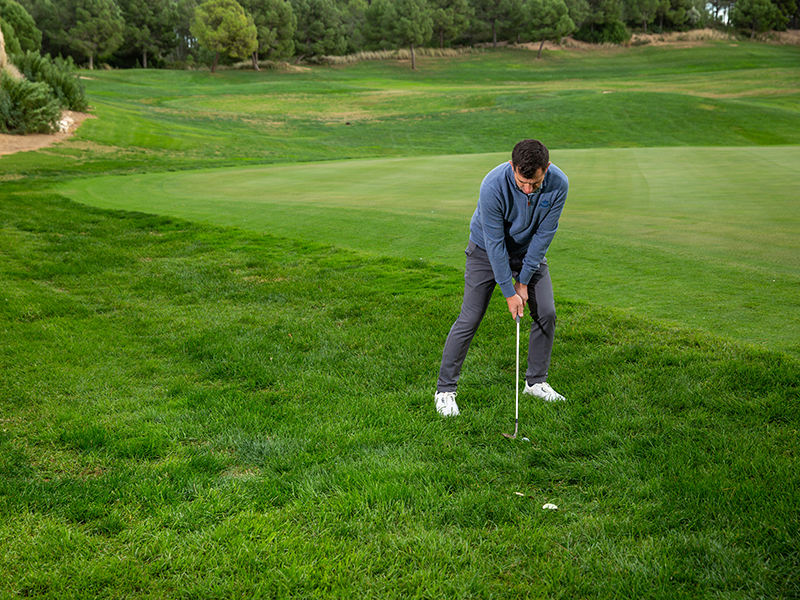Reading Lies In The Rough Around The Green Is Hard... But Short-Game Expert Dan Grieve's Method Can Make It Easy!
Find the putting surface no matter the lie with these essential short game tips from Golf Monthly Top 50 Coach Dan Grieve...


We have all seen an example of this on the television, where one of the world's best golfers arrives to a difficult lie around the green and proceeds to seamlessly extract it and spin the golf ball perfectly to the hole.
This is something tour pros do well, but it certainly isn't as easy as they make it look. Judging lies in the rough is a skill that needs practice, so we asked Golf Monthly Top 50 Coach Dan Grieve to share his top tips to get you onto the green and out of trouble...
How To Read Lies In The Rough Around The Green
In the video above, I have set-up three different lies around the green. Number one is where the ball is sitting up right on top of the grass, which is very easy to go underneath it. The second is the most common, nestled down slightly with perhaps just the top of the ball being visible. The final lie is really buried down in the thick stuff, which is almost impossible to see and can be daunting for amateur golfers.
If you approach all three shots with the same technique, you will probably play one of them well and the others might well take two to get onto the green. The key is to understand how to make small adaptions, so that you have the versatility and angle of attack to still make the contact you need to get the ball close.
Ball Sitting Up On Top Of The Rough

For this shot, I would recommend you use a little less loft, such as a gap wedge, as the straighter face will reduce the chances of the ball riding up the grooves and the club sliding straight underneath it.
Setup with a narrow stance, with a chip-and-run-style technique, and make sure not to have any wrist action in the swing as I don't want to go under the ball and hit too high up the face at the crucial moment.
Try to catch it on that third of fourth groove of the clubface and the ball should wander nicely down towards the hole.
Subscribe to the Golf Monthly newsletter to stay up to date with all the latest tour news, equipment news, reviews, head-to-heads and buyer’s guides from our team of experienced experts.
Ball Partially Nestled In The Rough

If I were to use that same technique for this lie, which is a very shallow angle of attack, the grass is going to start grabbing the club behind the ball and by the time the club reaches the ball it will have very little energy left – meaning the ball will end up a few feet in front of you.
Instead, use a little bit more loft, like a sand wedge, and stand a little bit wider in your stance. For the previous lie, I had my feet quite close together but this time I want them to be about hips-width apart.
By getting a little bit wider, you are able to get more onto your front side with your weight on your front foot. This will steepen the angle of attack and allow you to get a good contact on the ball.
Similar to a bunker shot, aim to hit about an inch behind the ball. Grip the club a little tighter with the bottom three fingers of your lead hand as this will protect against the club being manipulated by the long grass through the swing.
Ball Buried In The Rough

When the ball has really nestled down in the rough, you will struggle to get the ball to move with a shallow angle of attack. Try using a lob wedge for this shot, lean left with your weight on your front side and allow your left shoulder to be much lower at address.
This will increase the angle of attack, and pop the ball out nicely, but it's still really important you hit an inch behind the ball. You don't need to try and kill it, as I often see a lot of people in thick rough trying to really drive into the ball, but if you get the angle of attack correct you don't need to hit it hard to get the result you want.

Location: Woburn GC
Dan is one of the leading coaches in the UK, a Fellow of the PGA and a short-game virtuoso. He has had considerable success with a collection of tour pros, helping them to Order of Merit titles and major victories, and his Short Game School is the most attended in the UK. His students, past and present, include Charley Hull, Georgia Hall, Inci Mehmet and Iona Stephen.
Most common problem:
Swing – over the top , help by getting the basics correct at address and making them aware how to get the club online coming down.
Short game – creating spin and feel around the greens, help by educating on what the short game actually is (weak on purpose) and understand bounce and how they can apply it to different lies/situations.
Greatest success story:
Helping Georgia Hall from World No. 450 to No. 6 and winning a Major, two Order of Merits and Solheim Cup appearances.
Greatest teacher:
Alex Hay was a great influence during my first few years at Woburn. In sport more generally Sir Clive Woodward has taught me how to deliver at the highest level.
Most common fault:
Flipped right hand (hands behind the ball). Understand a correct coil/load going back and how to sequence better coming down so the chest opens up and gives the arms space to deliver a stronger impact. Lots of body action drills to enhance the feel, with and without the ball.